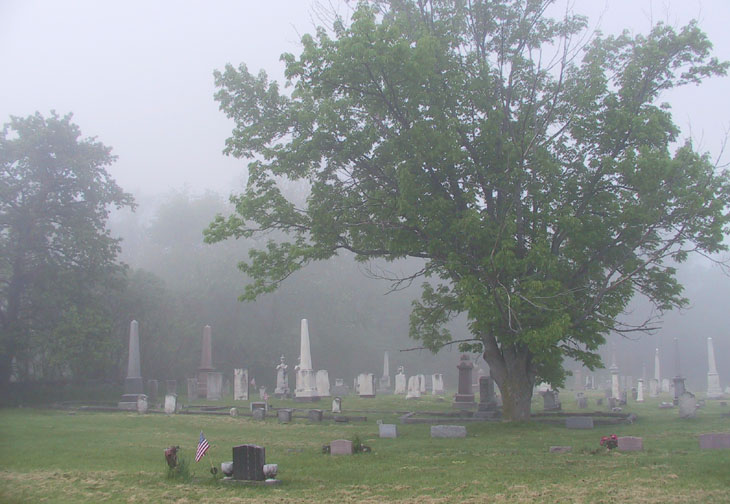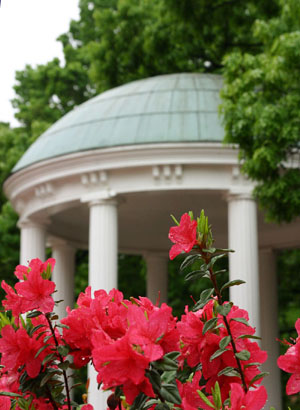 So, you find yourself (wait, isn’t that a goofy phrase? Like you might have lost yourself, or perhaps been paying no attention, look down, and whoops, there you are?) in a scenic location, faced with a gorgeous view, great lighting, and a cooperative sky. The photo is made for you, isn’t it? All you have to do is take it. And this is the thinking of countless people when they travel to common locations.
So, you find yourself (wait, isn’t that a goofy phrase? Like you might have lost yourself, or perhaps been paying no attention, look down, and whoops, there you are?) in a scenic location, faced with a gorgeous view, great lighting, and a cooperative sky. The photo is made for you, isn’t it? All you have to do is take it. And this is the thinking of countless people when they travel to common locations.
There are definitely things you can do to improve on a great scene, however, and one of them is to include a foreground element. It’s hard for me to say why this is, but having a focal point in the foreground of the shot, obviously closer to the viewer than the majority of the image, provides a lot more character. With wide angle views like this one, something “at your feet” puts the viewer in the picture, making the depth much more apparent and letting them feel able to step into the scene themselves.
Finding such an element, or selecting one, is a trick in itself. For this shot, the large leaf actually provided the idea to do the scenic, and made me aware of the channel of the sky mimicking the riverbed. But perhaps more often you’ll see the potential of the scene first, then try to compose it with something in the foreground. It should be topical and appropriate, of course, though there’s something to be said for anachronistic elements, too, like a old doll in thick woods. It should draw the eye enough to make a focal point, which allows it to be smaller and not dominate the frame if necessary. If it can work with the lines or other aspects of the frame, all the better.
Sometimes, getting lower to the ground enhances the foreground element, and making it loom larger than the distant background elements is a compositional style itself. This can make something small and subtle become attention-worthy, accentuating the idea of discovery, and bringing this idea of disparate sizes and scale to the viewer.

Here, the gravestone with the flag is the foreground element, balancing the tree on the right and providing a line leading into the image, as well as some depth that wouldn’t be there with the background gravestones alone. The flag adds just enough draw to make the marker the focal point, but it is subtle enough to let the scene itself remain the subject of the image. One almost gets the impression of isolation from that headstone, separated as it is from the bulk of the others, but it makes a great anchor for the way the rest is framed.
 Alternately, you might want to make the foreground element the primary focus, and let the background become more subtle or simply a setting. Old Well on UNC Chapel Hill’s campus is a well-known landmark and probably the most photographed item in central Carolina, certainly in Chapel Hill, so I decided to approach it a little differently while I was there with a student. Its color and shape are instantly apparent, no subtlety here, but being out of focus makes it a setting rather than a subject, and we look instead at the sharp flowers. The tallest flower gains dominance in the frame, assisted by placing it between columns and against the shadow of the dome, and the color leaps out, even on the overcast day, contrasting significantly with the remainder of the frame. One might argue that this isn’t really a foreground element, rather the prominent subject, but the known disparity of sizes between foreground and background, as well as the enhanced distance from the short depth-of-field, makes this up for grabs I think. The upward angle means we’re down lower than normal, putting us in close among the hedge and almost disdainful of the tourist attraction (this probably illustrates my whole approach to photography pretty well.) (“Well,” heh.)
Alternately, you might want to make the foreground element the primary focus, and let the background become more subtle or simply a setting. Old Well on UNC Chapel Hill’s campus is a well-known landmark and probably the most photographed item in central Carolina, certainly in Chapel Hill, so I decided to approach it a little differently while I was there with a student. Its color and shape are instantly apparent, no subtlety here, but being out of focus makes it a setting rather than a subject, and we look instead at the sharp flowers. The tallest flower gains dominance in the frame, assisted by placing it between columns and against the shadow of the dome, and the color leaps out, even on the overcast day, contrasting significantly with the remainder of the frame. One might argue that this isn’t really a foreground element, rather the prominent subject, but the known disparity of sizes between foreground and background, as well as the enhanced distance from the short depth-of-field, makes this up for grabs I think. The upward angle means we’re down lower than normal, putting us in close among the hedge and almost disdainful of the tourist attraction (this probably illustrates my whole approach to photography pretty well.) (“Well,” heh.)
While this doesn’t have anything to do with the topic of my post, there’s a further subtle element that comes out in a larger version of the image, which can be seen if you click on this one. The recent rain is still apparent on the flowers, fitting in with the sky and lighting and adding just a little atmosphere. If the sky had been bright and sunny, the viewer would likely believe the water drops were due to a sprinkler rather than rain – environment does matter in the image.
It isn’t paramount that a foreground element be included in every scenic shot, and doing so would likely get your images into a rut. But there are times when it adds much more to the scene – if in doubt, try shooting both and see what garners better reactions. But at the very least, always keep such elements in mind, and consider how they can enhance your composition.




















































